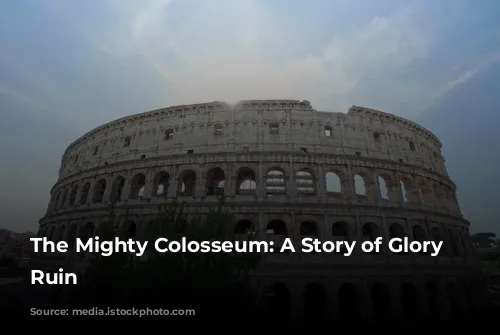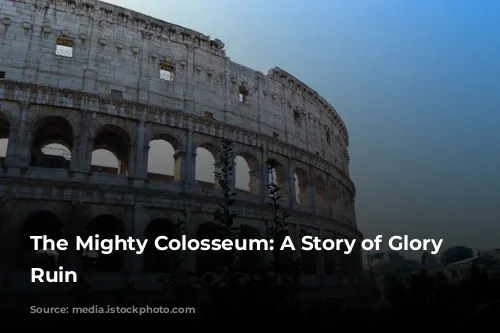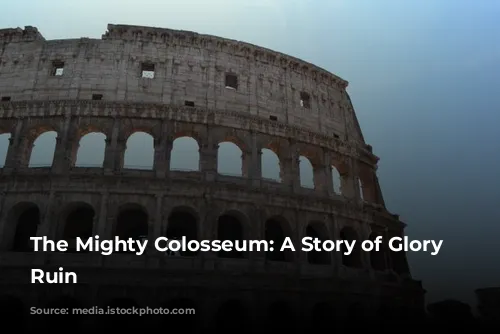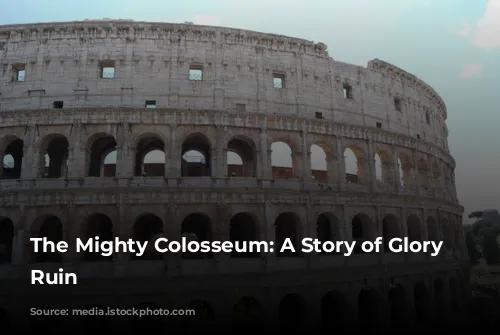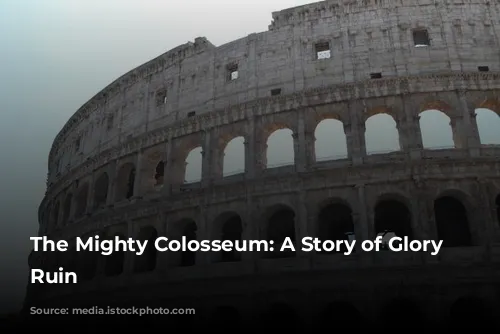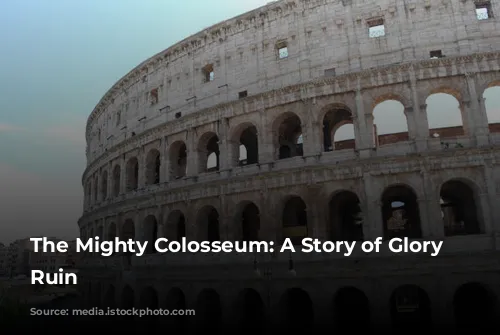Imagine this: the biggest, most awe-inspiring amphitheatre in the Roman world, towering over the city. This is the Colosseum, a name synonymous with ancient Rome, a symbol of power and spectacle.
From Grand Opening to Marble Quarry
The Colosseum wasn’t built overnight. Started by Emperor Vespasian of the Flavian dynasty, it was inaugurated by his son, Titus, in 80 AD. The opening ceremony was a spectacular event lasting a whopping one hundred days! The Romans witnessed thrilling gladiatorial combats, exotic animal hunts, and even naval battles – naumachias – where the arena was transformed into a vast lake, echoing great battles of the past.
But why is it called the Colosseum? The name first appeared in a medieval prophecy by the monk Venerable Bede: “Rome will exist as long as the Colosseum does; when the Colosseum falls so will Rome; when Rome falls so will the world”. It is believed he might have linked the name to the Colossus, a gigantic statue of Emperor Nero, standing near the amphitheatre, which no longer exists.
An Architectural Masterpiece
The Colosseum was a masterpiece of Roman engineering, built using a technique they mastered: the arch. Imagine the Colosseum as a series of Roman aqueducts, stacked one on top of the other, showcasing the arch’s power to distribute weight and create a sturdy structure.
Sadly, the Colosseum we see today is a mere shell of its former glory. Over time, much of the surrounding brick wall was lost, and the marble used to adorn it was plundered. Popes in the Middle Ages even used the Colosseum as a quarry, taking the materials to build the Barberini Palace, Piazza Venezia, and even St. Peter’s Basilica!
A Seat for Every Citizen
The Colosseum was designed to accommodate up to 70,000 spectators! Seating was arranged by social status, much like modern theatres. Commoners sat in the upper tiers, while the elite had seats closer to the arena. The Emperor, senators, priests, and vestals enjoyed the prime viewing positions.
To protect the crowd from the blazing Roman sun, an ingenious system of velaria was used. This was a giant linen awning, stretched over the arena by sailors from the Imperial fleet. They moved the velaria using ropes, winches, and wooden poles in a synchronized, awe-inspiring display.
The Show Must Go On
The Colosseum was a stage for a variety of spectacles. Imagine stepping through a hidden passageway into the arena. You would be greeted by the echoes of the past, the ghosts of gladiators and wild animals. Below the arena floor, hidden cellars housed equipment used for the grand shows.
Early in the day, spectators enjoyed venationes – hunts featuring exotic animals, sometimes pitted against gladiators or even condemned criminals. The silvae were particularly spectacular, with painted backdrops and props creating a forest-like scene.
But the highlight of the day was undoubtedly the gladiatorial combats. A deafening roar would erupt as the gladiators, emerging from underground tunnels, entered the arena. They were greeted with cheers and adoration, like modern-day sports heroes.
Gladiators: More Than Just Fighters
Gladiators were more than just fighters; they were celebrities, heroes, and symbols of power. They were often prisoners of war who chose to fight for their freedom or were poor individuals seeking fame and fortune. The profession offered not only wealth but also a chance to become beloved by the crowd, especially the women, who were known to lavish gifts on them.
The gladiators fought with various weapons and styles, adding drama and excitement to the duels. If a gladiator was wounded, he could plead for mercy, and the audience would implore the emperor, who ultimately decided their fate with a simple gesture: thumbs up meant mercy, thumbs down meant death.
A Dark Legacy
The brutality of the shows in the Colosseum is undeniable. The Romans enjoyed spectacles that would be considered violent by today’s standards, reminiscent of “splatter” films. The stench of blood, burnt flesh, and wild animals was a constant reminder of the savagery that took place.
From Arena to Symbol
After the fall of the Roman Empire, the Colosseum fell into disuse, its walls housing various communities, including hermits, hospitals, and even a cemetery.
Threatened with demolition by Pope Sixtus V, the Colosseum was saved and declared a sacred monument dedicated to the Passion of Christ by Pope Benedict XIV. A cross was placed atop the structure, a symbol of the sufferings of Christian martyrs.
The Colosseum has endured, a powerful reminder of the grandeur of ancient Rome, standing as a testament to the ingenuity of its builders and the brutal spectacles it witnessed. Today, it is a symbol of history, a place where visitors can connect with the past and imagine the echoes of the roaring crowds, the clash of steel, and the echoes of the past.
